A LOT OF ASSORTED NONSENSE ABOUT AFGHANISTAN FROM ERIC MARGOLIS
ANALYSIS BY MAJOR AGHA H AMIN (RETIRED)
FACING THE WRITING ON THE WALL IN KABUL
by Eric Margolis
26 May 2012
One of my favorite artists was the superb Victorian painter Lady Jane
Butler who captured in oil the triumphs and tragedies of the British Empire.
Her haunting painting, "The Retreat from Kabul, " shows the sole
survivor of a British army of 16,500, Dr. William Brydon, struggling
out of Afghanistan in January, 1842. All the rest were killed by
Afghan tribesmen after a futile attempt to garrison Kabul.
One of my favorite artists was the superb Victorian painter Lady Jane
Butler who captured in oil the triumphs and tragedies of the British Empire.
Her haunting painting, "The Retreat from Kabul, " shows the sole
survivor of a British army of 16,500, Dr. William Brydon, struggling
out of Afghanistan in January, 1842. All the rest were killed by
Afghan tribesmen after a futile attempt to garrison Kabul.
THIS WHOLE ARGUMENT IS B____LL S____T AND A ROMANTICISED VERSION OF HISTORY.WHAT REALLY HAPPENED WAS THAT A BRIGADE SIZE MUCH FAMISHED COLUMN OF 700 BRITISH TROOPS FROM HM 44 FOOT AND SOME 4500 NATIVE INDIAN TROOPS RETREATING FROM KABUL TO JALALABAD IN HEAVY SNOWFALL WAS HARASSED AND DESTROYED BY MORE THAN 30,000 AFGHANS.THE STORY DID NOT END HERE.BRITISH COMMANDERS NOTT AND POLLOCK ON THEIR OWN JUDGEMENT RECAPTURED KABUL AFTER THIS INCIDENT , BURNT IT AND WITHDREW IN GOOD MILITARY ORDER BACK TO INDIA.A DOCILE AND BRITISH VASSAL KING DOST MOHAMMAD KHAN WAS PLACED ON THE THRONE IN KABUL.
THIS KING COOPERATED WITH BRITISH IN 1857 INDIAN REBELLION AT A LOW COST OF 13 LAKHS PER YEAR .AFGHANISTAN BECAME A BRITISH VASSAL IN FOREIGN POLICY TILL 1919 AND AGREED TO ONLY HAVE A BRITISH EMBASSY IN KABUL.ALL AT A LOW COST OF 13 LAKHS PER YEAR.MY DETAILED ARGUMENTS TO TRASH THIS B____LL S____T THEORY OF GRAVEYARD OF EMPIRES IS APPENDED AT THE END OF THIS REJOINDER
THIS KING COOPERATED WITH BRITISH IN 1857 INDIAN REBELLION AT A LOW COST OF 13 LAKHS PER YEAR .AFGHANISTAN BECAME A BRITISH VASSAL IN FOREIGN POLICY TILL 1919 AND AGREED TO ONLY HAVE A BRITISH EMBASSY IN KABUL.ALL AT A LOW COST OF 13 LAKHS PER YEAR.MY DETAILED ARGUMENTS TO TRASH THIS B____LL S____T THEORY OF GRAVEYARD OF EMPIRES IS APPENDED AT THE END OF THIS REJOINDER
This gripping painting should have hung over the NATO summit meeting
last week in Chicago to remind the US and its allies that Afghanistan
remains "the graveyard of empires."
THIS IS NOT ABOUT GRAVEYARD OF EMPIRES.AFGHANISTAN WAS NEVER A GRAVEYARD OF EMPIRES.IN MID SIXTEENTH CENTURY IT HAD A MUGHAL HINDU GOVERNOR WHOSE ONLY WEAPON WAS A WALKING STEP.TILL 1747 AFGHANISTAN WAS RULED BY VARIOUS TURKIC TRIBES OR PARTLY BY MUGHAL INDIA AND SAFFAVID IRAN.
The latest empire to try to conquer Afghanistan has failed, and is now
sounding the retreat.
The latest empire to try to conquer Afghanistan has failed, and is now
sounding the retreat.
THE LATEST INVASION IS A GEOPOLITICAL STRATEGIC MANOEUVRE THAT THE NATO LED BY US HAS LAUNCHED TO DOMINATE THE STRATEGIC HEARTLAND OF WEST ASIA.NATURALLY THE ANTI US INSURGENTS ARE GETTING AID FROM PAKISTAN , CHINA , RUSSIA AND MANY NON STATE MUSLIM PHILANTHROPIST BILLIONAIRES.NORTH AFGHANISTAN BY AND LARGE SEES NATO AS A SAVIOUR FROM TALIBAN WHO REGARD TAJIKS , UZBEKS,BALOCH , SHIAS,ISMAILIS,EDUCATED PASHTUNS AS INFIDELS AND WOULD MASSACRE THEM
All the hot air in Chicago about "transition," Afghan self-reliance,
and growing security could not conceal the truth that the mighty US
and its dragooned western allies have been beaten in Afghanistan by a
bunch of mountain warriors from the 12th Century.
All the hot air in Chicago about "transition," Afghan self-reliance,
and growing security could not conceal the truth that the mighty US
and its dragooned western allies have been beaten in Afghanistan by a
bunch of mountain warriors from the 12th Century.
THE US FAILURE HAS BEEN TO PLAN A PHASE THREE AND THIS NEEDS A DYNAMIC PLAN. COMPLETE WITHDRAWAL FROM AFGHANISTAN IS NOT THE RIGHT SOLUTION
SEE THE ANALYSIS BELOW FOR OPTIONS
The objective of war is to achieve political goals, not kill people.
The US goal was to turn Afghanistan into a protectorate providing
bases close to Caspian Basin oil, and to block China. After an
eleven-year war costing $1 trillion, this effort failed – meaning a
military and political defeat.
THERE NEVER WAS ANY MORALITY IN STRATEGY AND GEOPOLITICS.SO THE US OBJECTIVE OF WAR IS LOGICAL . MORAL OR IMMORAL . THAT IS SENTIMENTAL B___L SH___T.MORALITY NEVER EXISTED IN WORLD HISTORY.BE IT ANY RACE OR RELIGION
The US dragged NATO into a war in which it had no business and lacked
any popular support. The result: a serious weakening of the NATO
alliance, raising questions about whose interests it really serves.
The defeat in Afghanistan will undermine US domination of Western
Europe.
Claims made in Chicago that the US-installed Afghan regime will stand
on its own with $4 billion of aid from the west were pie in the sky.
Once US support ends, the Karzai regime is unlikely to survive much
longer than did Najibullah's Afghan Communist regime in Kabul after
its Soviet sponsor withdrew in 1989. Or the US-run South Vietnamese
regime that fell in 1975.
The US dragged NATO into a war in which it had no business and lacked
any popular support. The result: a serious weakening of the NATO
alliance, raising questions about whose interests it really serves.
The defeat in Afghanistan will undermine US domination of Western
Europe.
Claims made in Chicago that the US-installed Afghan regime will stand
on its own with $4 billion of aid from the west were pie in the sky.
Once US support ends, the Karzai regime is unlikely to survive much
longer than did Najibullah's Afghan Communist regime in Kabul after
its Soviet sponsor withdrew in 1989. Or the US-run South Vietnamese
regime that fell in 1975.
THE THREE STATE SOLUTION IN AFGHANISTAN WITH NATO IN AERIAL SUPPORT CAN CHECK THE TALIBAN.THE ENGLISH EAST INDIA COMPANY DID IT WITH ONLY 13 LAKH RUPEES IN 1857 ! THE AFGHAN KING DOST MOHAMMAD KHAN WAS SUCH A DISGRACE THAT HE GOT HIS SON WAZEER AKBAR KHAN THE AFGHAN HERO OF FIRST AFGHAN WAR POISONED BECAUSE WAZEER AKBAR KHAN WAS ANTI BRITISH AND THUS A THREAT TO DOST MOHAMMADS 13 LAKHS ALLOWANCE TO ACT AS THE ENGLISH EAST INDIA COMPANYS STRATEGIC PI____P IN AFGHANISTAN
FOR POISONING OF WAZEER AKBAR KHAN SEE QASIM RESHTIAS BOOK AFGHANISTAN BETWEEN EMPIRES
FOR POISONING OF WAZEER AKBAR KHAN SEE QASIM RESHTIAS BOOK AFGHANISTAN BETWEEN EMPIRES
The current 350,000-man Afghan government army and police are
mercenaries fighting for money supplied by the US and NATO. Many are
ethnic Uzbeks and Tajiks, blood foes of the majority Pashtun. Taliban
and its allies are fighting for nationalism and faith. History tells
us who will prevail.
THE AFGHAN NATIONAL ARMY AND POLICE WHOSE NUCLEUS ARE THE LEFTISTS CAN GAIN MILITARY VIRTUE AS DEFINED BY CARL VON CLAUSEWITZ BUT THAT NEEDS SOME YEARS.NOTHING WAS INEVITABLE IN HISTORY AND THIS INCLUDES THE IMAGINED TRIUMPH OF TALIBAN !
All Afghans know the western powers have been defeated. Those with
sense are already making deals with Taliban. Vengeance being a
cherished Afghan custom, those who collaborated closely with the
foreign forces can expect little mercy.
Air power is the key to US control of Afghanistan. Warplanes and
helicopter gunships circle constantly overhead to defend western bases
and supply routes. Reduce this air power, as will likely happen after
2014, and remaining US troops will be in peril. Pakistan's temporary
closure of NATO land supply routes to Kabul and Kandahar provides a
foretoken of what may occur. Currently, the US must rely on Russia for
much of its heavy supplies.
Already there are worries about getting US and NATO troops out of Afghanistan.
France's new president, Francoise Hollande, wisely reaffirmed his
pledge to withdraw all French troops this year. Other NATO members are
wishing they could do the same. No one wants to have their soldiers be
the last to die in a futile war that everyone knows is lost.
To wage and sustain the Afghan War, the US has been forced to
virtually occupy Pakistan, bribe its high officials, and force
Islamabad to follow policies hated by 95% of its people, generating
virulent anti-Americanism. The Afghan War must be ended before it
tears apart Pakistan and plunges South Asia into crisis into which
nuclear-armed India is likely to become involved.
Washington intends to leave garrisons in Afghanistan after the 2014
announced pullout date, rebranding them "trainers" instead of combat
troops. Their mission will be to keep the pro-US Afghan regime in
power. But neither the US nor NATO will come up with the $4 billion
promised in Chicago.
Washington is encouraging India to get ever more deeply involved in
Afghanistan – even to become its new colonial power. India would be
wise to keep its hands off.
In a second "Retreat from Kabul," remaining US garrisons in
Afghanistan may face the fate of the 1842 British invaders, cut off,
ambushed, and hacked to pieces by the ferocious Pashtun tribesmen. 30
Copyright Eric S. Margolis 2012
All Afghans know the western powers have been defeated. Those with
sense are already making deals with Taliban. Vengeance being a
cherished Afghan custom, those who collaborated closely with the
foreign forces can expect little mercy.
Air power is the key to US control of Afghanistan. Warplanes and
helicopter gunships circle constantly overhead to defend western bases
and supply routes. Reduce this air power, as will likely happen after
2014, and remaining US troops will be in peril. Pakistan's temporary
closure of NATO land supply routes to Kabul and Kandahar provides a
foretoken of what may occur. Currently, the US must rely on Russia for
much of its heavy supplies.
Already there are worries about getting US and NATO troops out of Afghanistan.
France's new president, Francoise Hollande, wisely reaffirmed his
pledge to withdraw all French troops this year. Other NATO members are
wishing they could do the same. No one wants to have their soldiers be
the last to die in a futile war that everyone knows is lost.
To wage and sustain the Afghan War, the US has been forced to
virtually occupy Pakistan, bribe its high officials, and force
Islamabad to follow policies hated by 95% of its people, generating
virulent anti-Americanism. The Afghan War must be ended before it
tears apart Pakistan and plunges South Asia into crisis into which
nuclear-armed India is likely to become involved.
Washington intends to leave garrisons in Afghanistan after the 2014
announced pullout date, rebranding them "trainers" instead of combat
troops. Their mission will be to keep the pro-US Afghan regime in
power. But neither the US nor NATO will come up with the $4 billion
promised in Chicago.
Washington is encouraging India to get ever more deeply involved in
Afghanistan – even to become its new colonial power. India would be
wise to keep its hands off.
In a second "Retreat from Kabul," remaining US garrisons in
Afghanistan may face the fate of the 1842 British invaders, cut off,
ambushed, and hacked to pieces by the ferocious Pashtun tribesmen. 30
Copyright Eric S. Margolis 2012
Myth of English East India Companys Failure in First Afghan War
BY
MAJOR AGHA H AMIN (RETIR
Ranjeet Singh was the real architect of English East India Companys failures and reverses in Afghanistan once he forced them to
follow the much longer and logistically impossible route of attack via Sindh and Balochistan.
English East India Companys failures in Afghanistan were highly exaggerated although the force which was destroyed by Afghans at Gandamak was a
heavily outnumbered force of 700 British malnourished soldiers and some 4500 malnourished Indians.
Agha H Amin
Sepoy Perceptions about EEIC Military Effectiveness
Agha.H.Amin
The Bengal Army was the brain child of Lord Clive's military genius. The Bengal sepoys related to each other by blood relationship and caste bonds had served the EEIC for some 100 years when they rebelled in 1857. These men had a very close contact with the British and had observed them from very close quarters. Any neutral and unbiased account of the events of 1857 clearly proves that the Britisher as an officer was never disliked by the sepoys. As an officer who served in Pakistan Army I can state with conviction that the British provided excellent leadership to the Indians. They definitely knew how to lead and inspire the Indian, leading them from the forefront which I am afraid few of at least our native post 1947. Generals did either in Burma or in 1965 or in 1971. The sepoy admired and revered the British officer. In 1857 he was rebelling against the system instituted by the EEIC. Against policies formulated by men constituting a board of directors in far off England. The greasing of cartridges with pig or cow fat similarly was also an administrative decision. The sepoy perceived the British officer as a fair and brave leader and many British officers reciprocated these feelings. One of the British commanding officer committed suicide when his native infantry regiment was disbanded. Many others resisted disbandment of their units. One troop of 3rd Light Cavalry the most crucial unit of Bengal Army Sepoys as a matter of fact loyally fought for the British in 1857.
It appears, however, that sepoy perceptions about EEIC military effectiveness changed from absolute faith in the invincibility of the EEIC as a military machine to skepticism from 1804 to 1857. Before we proceed further we must state that the first major reverse or defeat which the EEIC suffered in India was in 1780 at the hands of Hyder Ali and Tipu Sultan who were heading forces whose fighting Hector Munro and Baillie in 1780 were defeated in a manner which was described by Fortes Cue the official historian of the British army in the following words, "The blunders had been flagrant and from a military point of view, Munro must be held solely responsible for one of the greatest calamities that has ever befallen the British arms"469. But this happened with the Madras Army. The Bengal Army sepoy realized for the first time in 1804 that the that EEIC was not invincible. This happened while dealing with the Mahrattas and not the Afghans who came much later. In 1804 five battalions of sepoys and about 3000 irregular horse left by the C in C Bengal Army Lord Lake to keep the Mahratta Holkar in check under the command of Colonel Monsoon were forced to make a disastrous retreat from Central India to Agra470. The results of this reverse were short term since Lord Lake immediately assumed personal command and defeated the Mahrattas. However, the harm had been done and the myth of invincibility of the EEIC as far as the Bengal Army was concerned was challenged for the first time. Monsoon's retreat was followed by a much more serious reverse which for many years shattered the EEIC myth of invincibility. This happened at Bhurtpore, the Hindu Jat fortress which is the only fort in British Indian history which a British army in India failed in a siege to capture. Leading the EEIC army in this case was a man of no less a stature than Lord Lake who had previously captured Delhi and destroyed Mahratta power in North India in battle of Laswari. (It must be remembered that Panipat - 1761 checked the Mahrattas, but this was temporary since within few years they recaptured Delhi. It was at Laswari on 01 Nov. 1803 that one European infantry regiment and a couple of Bengal Army Regiments composed of roughly 3/4 Hindu soldiers and 1/4 Hindustani Muslims destroyed the Mahratta Army) 471. In 1805 Lake failed to capture Bhurtpore. He made a first assault in January 1805 but failed to capture the fort. The British troops became so demoralised that the three European regiments i.e. HM 75 Foot, HM 76 Foot and the 1st Bengal Europeans refused orders to attack and withdrew 472! Almost a thousand casualties were suffered but repeated British assaults were repulsed. At last on 24 February Lord Lake withdrew his army from Bhurtpore. Subsequently, the Hindu Jat Raja sued for peace in 1805 due to reasons of political expediency; but the fact remained that militarily this Hindu Jat Raja had not been defeated! The EEIC never forgot this defeat and later on they did capture Bhurtpore but this was much later i.e. on 18 January 1826. The force used at Bhurtpore this time was larger than the one the EEIC used to recapture Kabul in September 1842473 in the first Afghan War. Another reverse which the EEIC suffered was in the Nepal war of 1814-16. Here their initial advance into Nepal was repulsed. Nepal was subsequently defeated using the Bengal Sepoys but again the harm had been done. The sepoy's confidence in the British officer was a little shaken. The EEIC retreat from Kabul to Jalalabad in the first Afghan war was not a big disaster keeping in view the numbers involved. There were only 700 Europeans in some 5000 troops in the weak and Stan brigade which withdrew from Kabul in January 1842 and which was destroyed by an overwhelming force of some 30,000 Afghans taking advantage of harsh weather and shortage of food in this EEIC force. The EEIC troops largely composed of Bengal sepoys did subsequently recapture Kabul in September 1842. But the human mind is not a computer and the net significant impression produced on the sepoy was that the EEIC had been forced to retreat. The extremely tough resistance of the valiant Sikhs in the First and Second Sikh wars again produced a strong impression on the mind of the Bengal Army Sepoy. At Mudki the main British army survived just because the Sikh general Taj Singh did not attack them,474a otherwise their destruction was certain. This was a battle fought on absolutely plain land, unlike Afghanistan where the Afghans bravery had a deep connection with adverse mountainous terrain. The impressions of the Sikh wars were the deepest in convincing the sepoys that the British were not invincible. In Afghanistan the mountains, the adverse weather and the small numbers were an excuse; but at Chillianwala everything favoured the British and yet they failed!
All these disasters from 1804 till 1849 certainly had an influence on the mind of the Bengal sepoy and reinforced his decision to rebel in 1857. The sepoys felt in 1857 that they could meet the Europeans on the battlefield as an equal. Their perceptions were however erroneous in one area. This was about realising that the principals force multiplier of sepoy efficiency was superior leadership of the British officer. Without British leadership the military effectiveness of the sepoy reduced by some 75%. Since the British suppressed the initial rebellions in Punjab they were able to use Punjab and Frontier's manpower to create new regiments or in using comparatively new regiments raised in 1846-49 which were used with as much effect at Delhi as the Bengal sepoy units at Kabul or Ghazni or at Gujrat. The British officer of 1857 was the greatest force multiplier of military effectiveness by virtue of leadership which was far superior to be "Rebel" leadership in terms of "Resolution" "Tactical Efficiency" reinforced by an iron frame administrative organisation created by the EEIC during its 100 year rule in India and its eight year old rule in the Punjab.
Lack of Foreign Intervention
It has been said that "French" intervention in support of the American rebels during the American war of Independence played an important role in the success of the Americans against the British. The French navy played a decisive role in blocking British reinforcements and in movement of British ships from one part of America to the other. Similarly, in 1971 the Indian intervention played an important role in the otherwise just and righteous struggle of the Bengalis against West Pakistan oppression. The Vietnamese may not have succeeded the way they did against USA, had the Chinese and USSR not helped them the way they did. Similarly the Afghans against USSR may not have been so successful had the USA not aided them. The foreign intervention factor plays an important role in the success of a rebellion. In 1857 no such thing happened. Afghanistan was the only country which could have made the rebellion a success by invading India. But we must remember that contrary to the prevalent myth about Afghan invincibility, these gentlemen had been so severely mauled by the EEIC in September 1842 that they did not dare to attack the EEIC in 1857, which as a matter of fact was a golden opportunity for them to attack India. The EEIC was at its lowest ebb and the Governor General of India and the Chief Commissioner of Punjab were seriously contemplating about surrendering all area upto river Indus to Afghanistan. In June - July 1857 John Lawrence the EEIC Chief Commissioner of Punjab (including present N.W.F.P.) had become so demoralised due to the siege of Delhi that he had informed Edward's the Commissioner of Peshawar that due to fear about security and survival of the British army at Delhi he was thinking about sending all British troops in Peshawar valley to Delhi and to invite the ruler of Afghanistan Dost Muhammad Khan to occupy the Peshawar valley upto the Indus on the understanding that if he proved faithful (which he certainly was!), the Peshawar valley would be ceded to him in perpetuity474. But Dost Muhammad was happier with the money EEIC was giving him every year. Secondly, Edward's the EEIC man at Peshawar was a man of immense resolution. Edwardes declared that rather than obeying such a defeatist order to abandon Peshawar "he would feel bound by conscience to resign and explain his reason to the government"475. Lord Canning the Governor General to whom Lawrence had requested for clearance regarding the proposal to cede Peshawar also realised that psychologically and politically such an action would be fatal since it would be perceived in NWFP and in Afghanistan as a withdrawal and defeat on the EEIC part. Canning therefore, decided in favour of Edwardes. Edwardes was right in understanding the true worth of Dost Muhammad Khan the so called "Amir of Afghanistan"! Dost Muhammad Khan's price was an annual subsidy of 12 lakh or 1.2 million Indian rupees per year 476! Just look at the difference in perceptions. The thoroughbred Britisher, the man who saved the Punjab in 1857 is thinking big. He thinks that "Dost Muhammad" the King of Afghanistan, the ruler of a proud race which became independent only in 1722 will accept nothing less than Peshawar valley from Khyber till Indus! Edward is a better judge, he beautifully appreciates that 12 lakh an year will do. Was there any difference between Bahadur Shah Zafar who was drawing a similar allowance as Dost Muhammad of Afghanistan? It was Afghan loyalty which saved India for the British more than Punjab or NWFP loyalty! I give full marks to he EEIC General Pollock who in 1842 on his own initiative decided to capture and burn Kabul, despite contrary orders from Ellenborough the Viceroy of India477. Thus on his orders Kabul was captured and burnt on September 1842. This was a good job since it was this severe mauling received in 1842 which most probably restrained Dost Muhammad from attacking India. Afghanistan thus lost probably the last chance to regain Peshawar! Thus we find our brave Muslim Afghan neighbours concluding an offensive defensive treaty with the EEIC while the Hindu Raja of Ballabghar and the Mahratta Tantia Topi were fighting alongside their Muslim Bengal Army Sepoys! Just Rs. 12 lakh per year, cheap isn't it! Thus Canning telegraphed Lawrence478:-
"Hold on to Peshawar. give upon nothing"
Money makes the mare go! The Khilafat Leaders of 1918-23 had not read the history of Afghans and thus naively hoped that the Afghans would invade India! The Afghans lost a golden opportunity of attacking British India during the First World War once the pure white troops holding India were as following479:
a. Eight Infantry Battalions
b. Thirteen Batteries of Artillery
c. Two Cavalry Regiments
A total of some just 15,000 troops! Foolishly the Afghans did attack India in 1919 when a new king came into power and were quickly pushed back by the British Indian forces who were back to the pre war strength.
PUBLICATIONS , RECOMMENDATIONS AND TESTIMONIALS AGHA H AMIN
BRIEF HISTORY OF PAVO 11 CAVALRY
PUBLICATIONS AGHA H AMIN




.jpg)


.jpg)









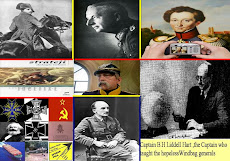
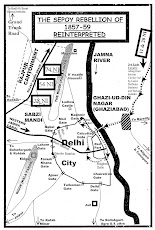
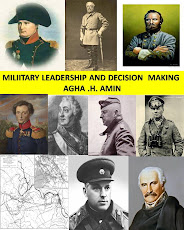

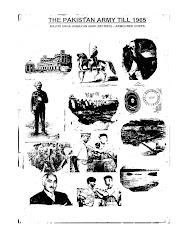
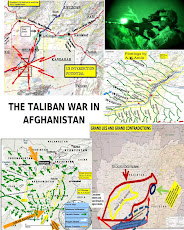
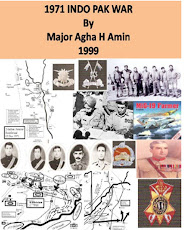
No comments:
Post a Comment
Note: Only a member of this blog may post a comment.